Montana, a land of breathtaking beauty and natural wonders, encompasses a diverse array of biomes that will leave you in awe.
In this article, I will delve into the captivating world of Montana’s ecological diversity and uncover the secrets of its mesmerizing biomes.
This article is for nature lovers, adventure seekers, and curious minds who wish to explore the enchanting biomes of Montana.
From the lush forests of Castle Valley to the breathtaking wildflowers of Golden Valley, Montana’s biomes are calling to be explored.
Join me on a journey through the rivers, mountains, and valleys of Montana as we uncover the rich tapestry of plant and animal life that makes this state a true paradise.
Together, we will forge a connection with Montana’s biomes that will stay with us long after we depart.
- Related article: Where’s Montana Located
Let’s dive into the wonders that await us in the extraordinary biomes of the Treasure State.
Biome vs Ecosystem
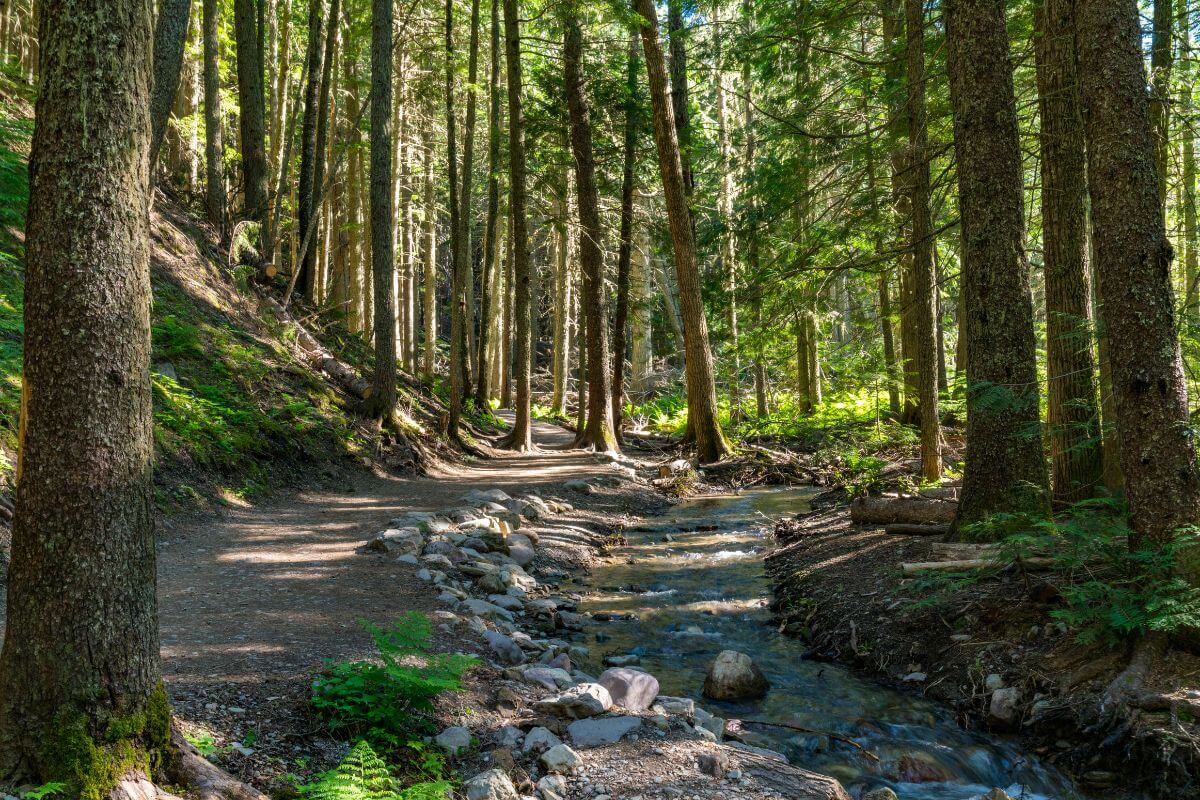
It’s important to understand the difference between a biome and an ecosystem. Biomes are specific geographic areas characterized by their unique blend of vegetation, soil, climate, and wildlife.
They are the grand-scale blueprint of nature’s diversity, showcasing the remarkable species that have adapted to and thrived in these distinct environments.
Ecosystems focus on the interactions and processes within a more localized system. An ecosystem can exist within a biome, describing relationships between living and non-living organisms in a specific area.
The table below further explains the differences between a biome and an ecosystem:
| Aspect | Biome | Ecosystem |
| Definition | Specific geographic areas are defined by types of vegetation, soil, climate, and wildlife. Notable for the species living within them. | Interactions between living and nonliving things within an environment |
| Size | Larger geographical regions are characterized by certain environmental features. | Smaller, more localized system focusing on interactions and processes within that environment. |
| Relationship | Each biome can contain multiple different ecosystems. | An ecosystem can exist within a biome and is a component of it. |
| Key Characteristics | Botanical composition, soil composition, climate condition, wildlife inhabitants | Interactions between organisms, energy flow and nutrient cycling, trophic levels, and food webs, abiotic factors (e.g., temperature and precipitation) |
Types of Biomes
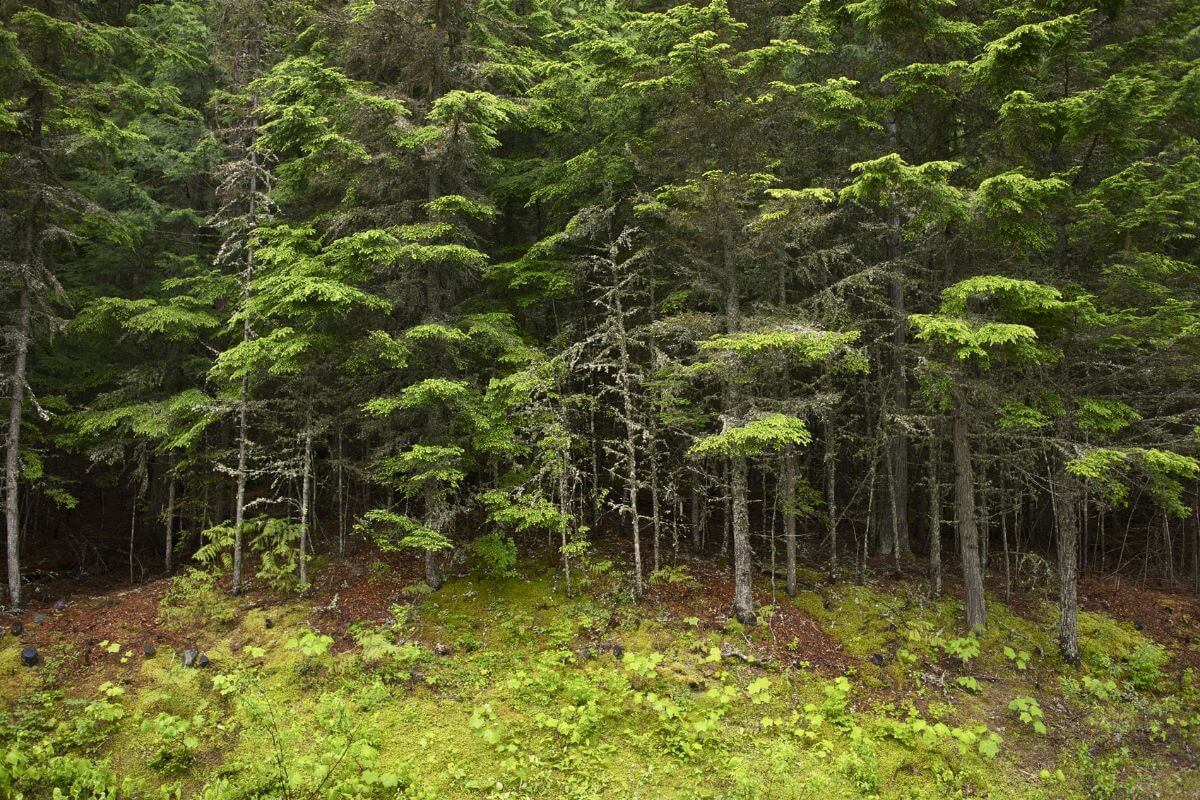
According to the UCAR Center for Science of Education, Earth’s biosphere consists of 5 main types of biomes: aquatic, grassland, forest, desert, and tundra.
These biomes can be further divided based on location, elevation, or other definitions. The defining features of biomes include the types of vegetation, soil, climate, and wildlife found within them.
Earth’s 5 major biomes host diverse ecosystems shaped by their defining characteristics:
| Biome Name | Description | Key Features | Notable Wildlife |
|---|---|---|---|
| Aquatic Biome | Characterized by water as its primary feature. | Freshwater and marine environments. | Fish, marine mammals, and various plant species. |
| Grassland Biome | Dominated by grasses, found in regions with moderate rainfall and seasonal temperature variations. | Home to herbivores like buffalo and grazers. | Buffalo and grazers. |
| Forest Biome | Comprised of densely wooded areas with various tree species. Can be temperate, tropical, or boreal forests. | Habitat for birds, mammals, and insects. | Birds, mammals, insects. |
| Desert Biome | Characterized by arid conditions with limited rainfall and extreme temperature fluctuations. | Vegetation adapted to conserve water, featuring cacti. | Camels, snakes, scorpions. |
| Tundra Biome | Located in cold regions with permanently frozen ground (permafrost). Vegetation includes mosses and shrubs. | Cold-adapted animals like polar bears, reindeer, and Arctic foxes. | Polar bears, reindeer, Arctic foxes. |
Montana’s Biomes
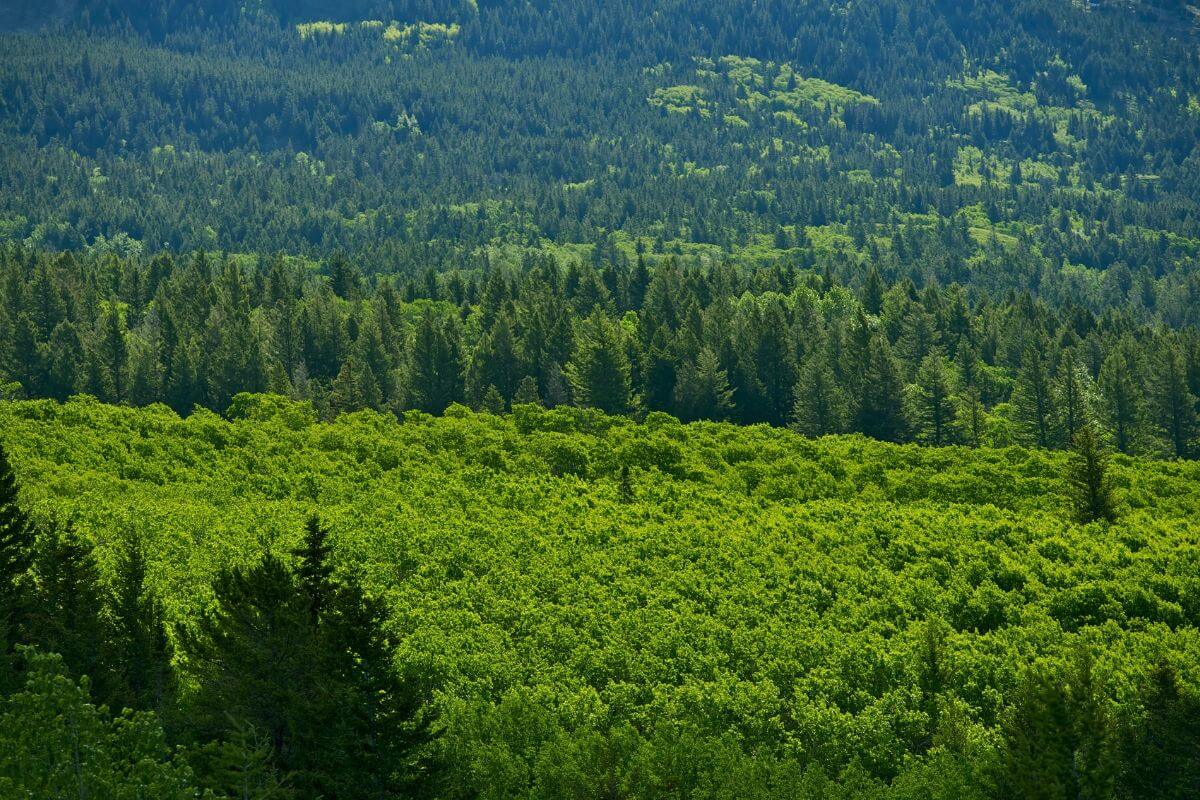
From the Rocky Mountains to the grasslands that stretch as far as the eye can see, Montana is a haven for nature enthusiasts seeking to immerse themselves in the wonders of the great outdoors.
It’s a harmonious symphony of nature’s wonders, where every tree, every animal, and every blade of the grass plays a vital role in maintaining the delicate balance of this captivating biome.
Montana’s Aquatic Biome
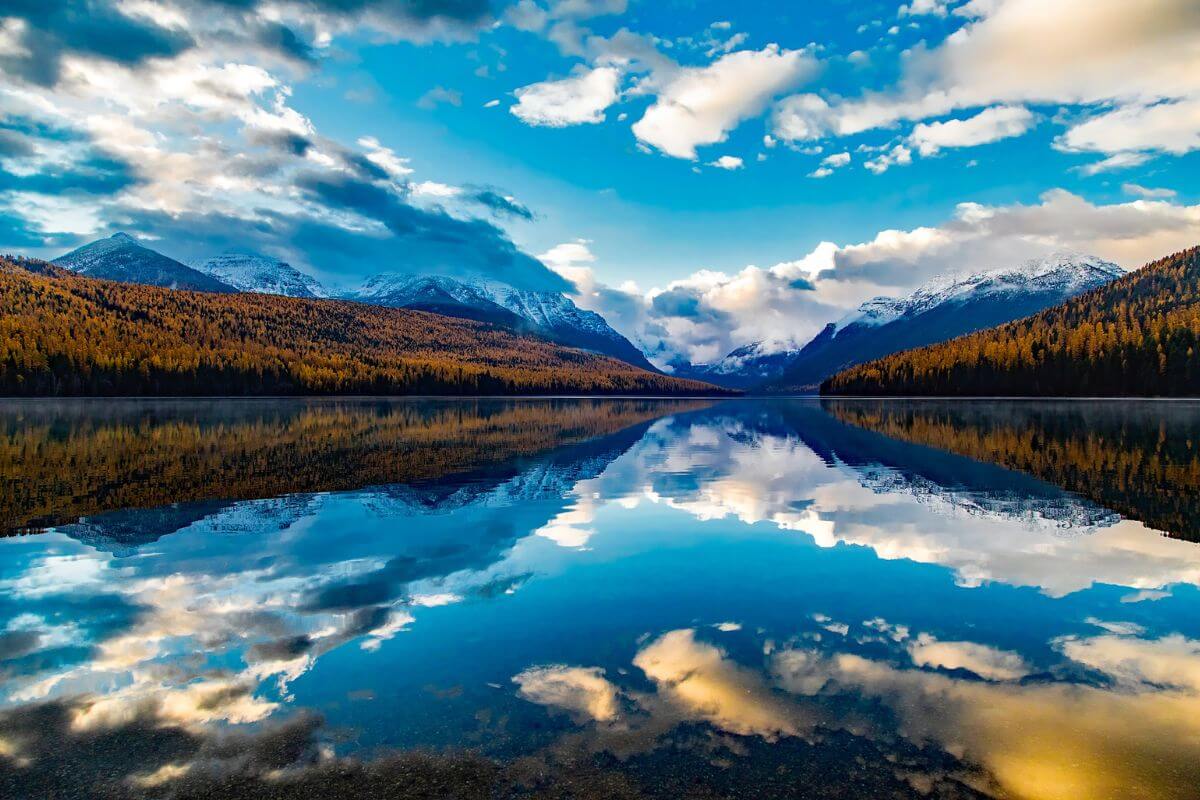
Aquatic biomes encompass the living and non-living components of water bodies, creating intricate ecosystems.
The aquatic biome divides into freshwater and marine environments:
- Freshwater regions – Freshwater areas, like lakes and rivers, boast lower salt concentrations.
- Marine regions – Marine zones, including estuaries and the ocean, have higher salt levels.
Montana, being a landlocked state in the United States, primarily has freshwater aquatic biomes. These freshwater biomes can be found in various forms, including rivers, lakes, ponds, and streams.
Although Montana lacks direct access to marine environments like oceans and seas, it boasts a significant presence of freshwater bodies, contributing to the state’s biome diversity.
Within Montana’s freshwater aquatic biome, diverse aquatic life thrives, from different fish species, trout, and bass to amphibians, aquatic plants, and various invertebrates.
The state is renowned for its pristine rivers and lakes, drawing enthusiasts for fishing, boating, and leisure activities.
Montana’s Grassland Biome
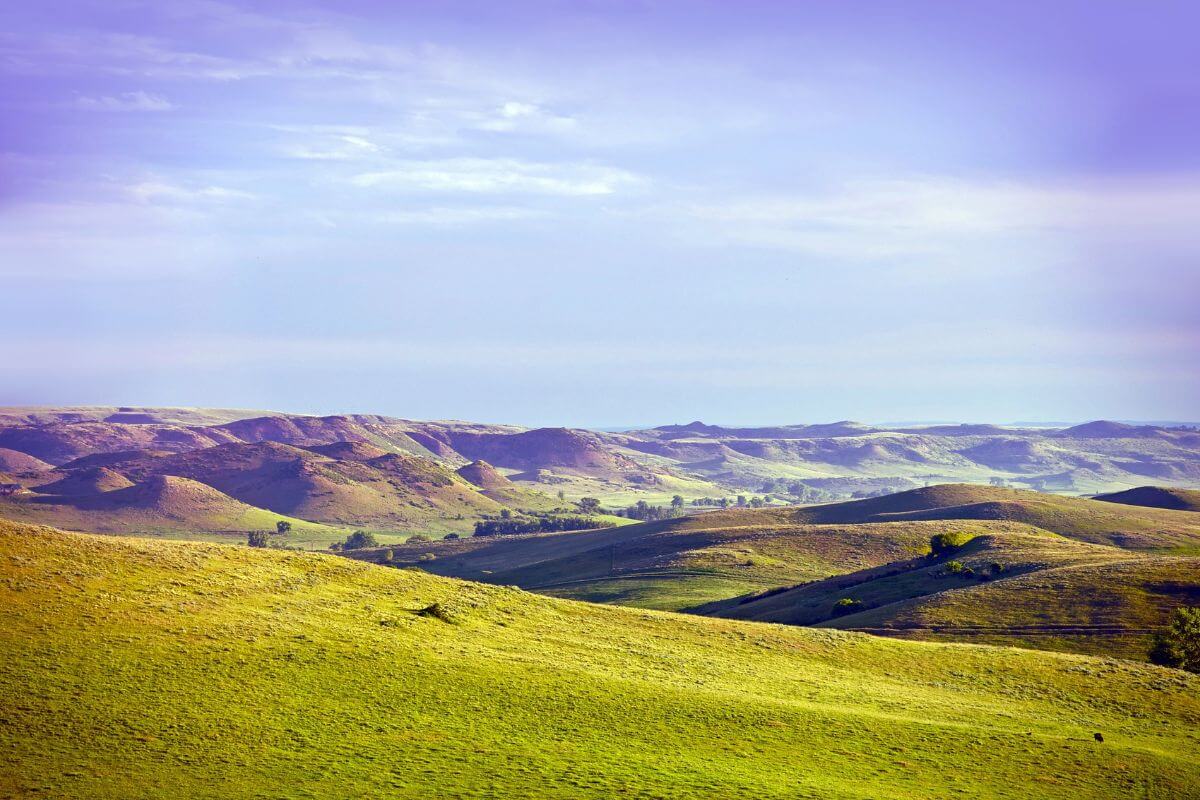
Montana’s grassland biome stretches as far as the eye can see. It is a mosaic of open grassy areas, shaped by the constant interplay of grazing animals and the rejuvenating force of frequent fires.
Within this expansive grassland, you will find 2 distinct systems:
- Lowland or Prairie Grassland – The vast prairie grasslands stretch from the Great Plains near the Rocky Mountains to the Appalachian Mountains in the east.
- Montane Grassland – The Montane grasslands can be found in the western part of Montana, nestled within mountain ranges such as the Anaconda-Pintlar, Pioneer, Snowcrest, and Gravelley.
Situated in the highest mountain areas, grassland thrives on flat, wet areas with poorly drained soils and on the slopes of windswept ridges. The rocky terrain and extreme weather conditions add to this.
Covering approximately 2,911 square kilometers, the Rocky Mountain Subalpine-Upper Montane Grassland in Montana is a testament to the resilience of nature.
Here, you will encounter common plant associations, each with its unique role in shaping the ecosystem.
And amidst this harmonious tapestry of life, fire plays a crucial role in maintaining the delicate balance.
Montana’s Forest Biome
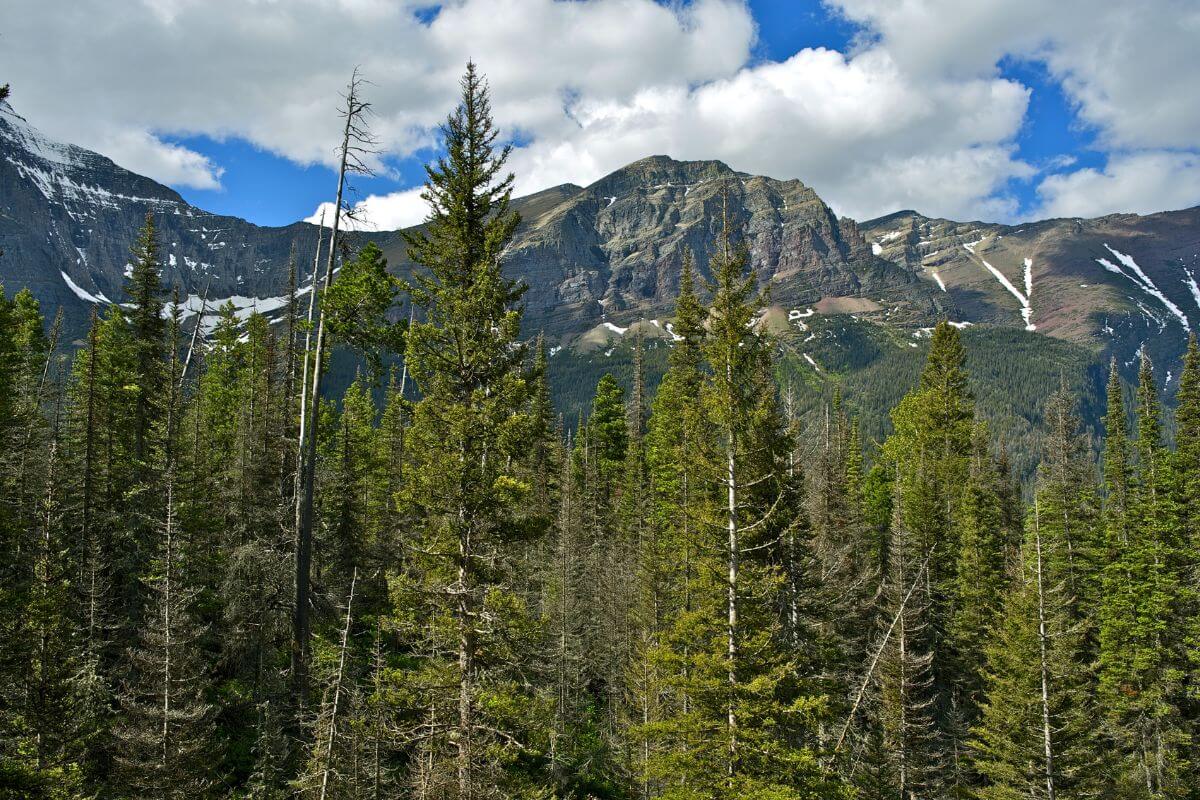
The forest biome encompasses any habitat on land that is dominated by trees, and the characteristic communities of plants, animals, and other organisms that inhabit these regions.
The 3 major types of forest biomes are temperate, tropical, and boreal forest. Northern Montana is part of the boreal forest, also known as taiga or snow forest.
In the northern part of the state, in the snow-covered landscape, stand towering coniferous trees that endure the harsh elements. Long, cold winters cloak the land in pristine white, creating a serene scene.
Venturing southward, the landscape shifts to the Rocky Mountain forests. These forests, dominated by conifer and deciduous trees, paint a picture of natural beauty.
The towering pines and spruces create a verdant tapestry, while the vibrant hues of the aspens add a touch of whimsy to the scene.
Shallow soils, shaped by the dynamic forces of the mountains, support a diverse array of plant and animal life.
From the graceful elk roaming through the underbrush to the elusive lynx hiding in the dense foliage, the forests of Montana are teeming with life.
In the forests of Montana, dominant animals and a multitude of other species thrive, making these landscapes rich and vibrant.
Montana’s Desert Biome
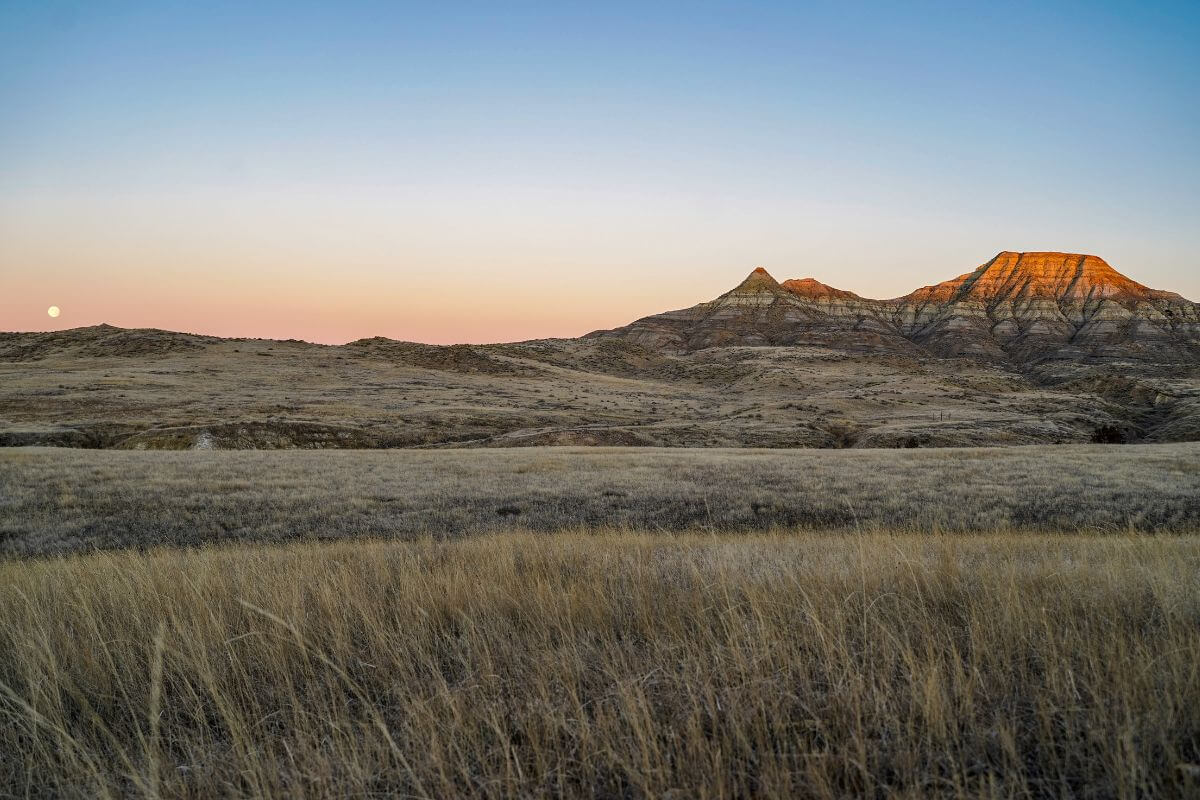
The Montana desert biome is characterized by arid or semiarid conditions, limited precipitation, and an environment adapted to conserve water.
Montana has a semiarid desert as part of the desert biome. This desert biome can be found in the island mountain ranges of both the north-central and south-central regions of the state.
From the expansive valleys to the majestic subalpine ridges, the Montane sagebrush steppe dominates the landscape. Its resilient presence can even be witnessed as far north as Glacier National Park.
Montana’s arid regions boast their very own hot desert, where desert heat prevails as a way of life. The plants have evolved to conserve water in order to survive the limited precipitation and arid conditions.
As for the animals, they are drought tolerant, adapting to the harsh environment. From reptiles and small mammals to birds, the desert biome of Montana provides a sanctuary.
Montana’s Tundra Biome
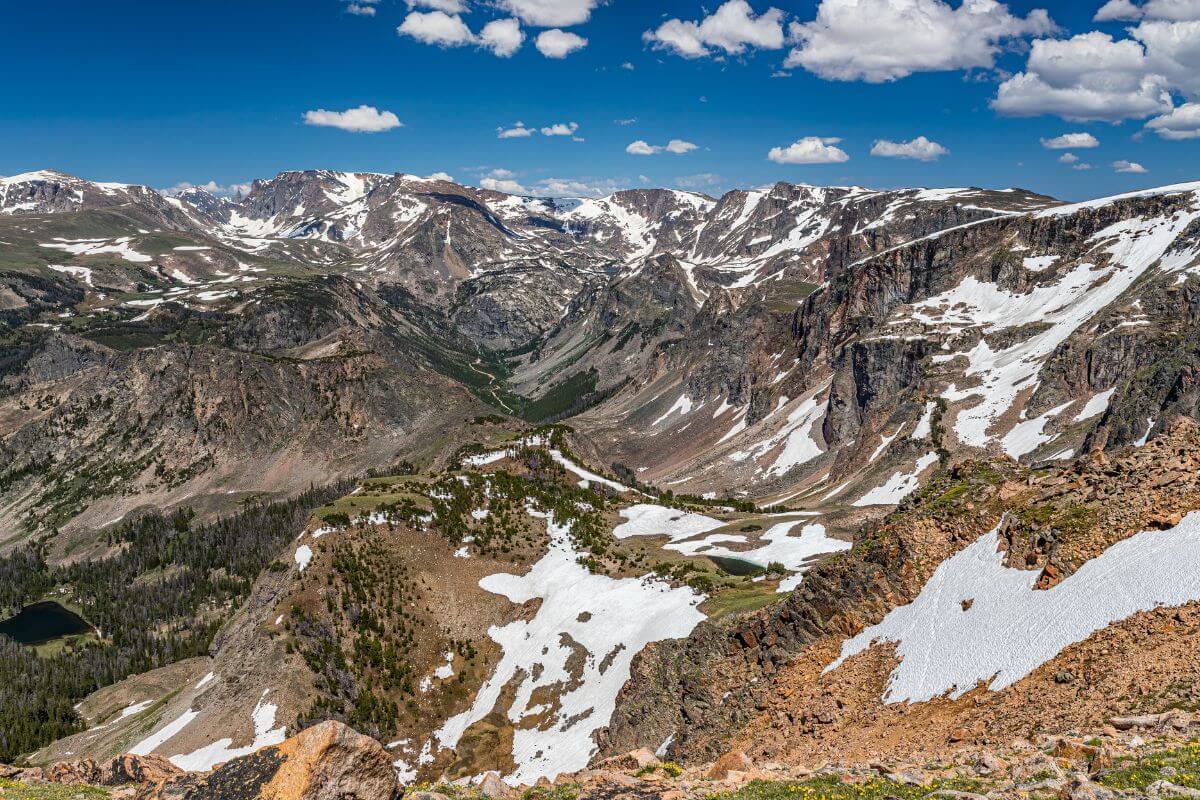
The tundra’s harsh, unique environment, above the tree line, reveals nature’s raw power through towering peaks and barren landscapes.
In this high-elevation mountain life zone, the absence of vegetation is striking. Instead, it is surrounded by a multitude of vibrant and resilient alpine plants.
In Montana’s tundra biome, adapting to the cold growing seasons, alpine plants have developed strategies to thrive under harsh climates and scarce resources. Each one is a marvel of nature’s ingenuity.
Covering hundreds of square kilometers, this high-elevation vegetated region stretches across the Rocky Mountains, extending 2,700 miles through the continent.
Montana’s Ecosystem
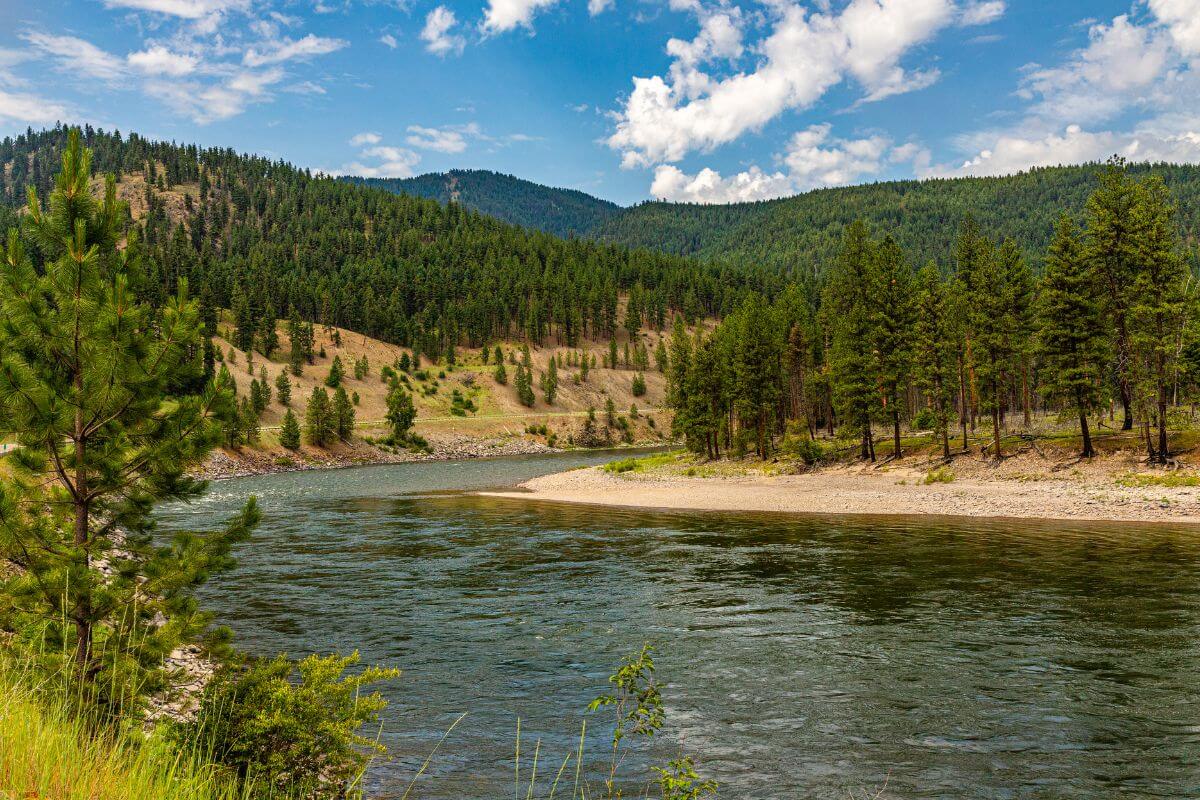
The vast and diverse state of Montana boasts a range of ecosystems, shaped by its unique geographical and environmental factors. Understanding these ecosystems requires different systems.
Since there are no straightforward criteria for defining the boundaries of an ecosystem, various individuals and organizations have devised their own classification systems.
Montana Fish, Wildlife and Parks (FWP) has identified 4 significant ecosystems in Montana, each distinguished by shared environmental traits influencing the flora, fauna, and dominant animals.
Montana Fish, Wildlife and Parks’ (FWP) primary ecosystems encompass:
- Montana forests
- Intermountain grasslands
- Plains grasslands
- Shrub grasslands
On the other hand, the Montana Agricultural Experiment Station (MAES) has developed a distinct framework for categorizing Montana’s ecosystems, focusing on various types of rangelands.
MAES recognizes a total of 22 unique ecosystems within the state.
The Montana Field Guides–Ecological Systems of Montana, created by the Montana Natural Heritage Program, identifies as many as 62 ecosystems, illustrating the diversity of Montana’s landscapes.
These ecosystems are characterized by factors like grassland, desert, temperate climate, fertile soils, and seasonal averages, contributing to the state’s remarkable ecological tapestry.
Montana Ecological Diversity Final Thoughts

The Montana mountains, with their slopes and rugged peaks, are home to montane forests teeming with life. Here, towering trees create a lush canopy, providing shelter and sustenance for a variety of wildlife.
The grasslands serve as a thriving habitat for countless species, each one perfectly adapted to the temperate environment. The plains grasslands are nurtured by fertile soils that support life.
The shrub grasslands, where hardy vegetation and resilient wildlife thrive, showcase the adaptability of the natural world.
Montana’s unique terrain, including its river valleys, forests, grassy plains, badlands, and caverns, contribute to the state’s ecological diversity, offering a multitude of ecosystems to explore and admire.
One of the key features of Montana’s ecosystem is the Greater Yellowstone Ecosystem, a vast and breathtaking expanse that supports a wide range of flora and fauna.
From iconic American bison to elusive wolves and majestic elk, this ecosystem is a testament to the power and beauty of nature.
Montana’s ecological diversity is a true marvel, with its varying biomes and ecosystems offering a captivating experience for nature enthusiasts.
With its spectacular landscapes and abundant wildlife, this state truly embodies the wonders of the natural world.
Montana Ecological Diversity FAQs
1. How Many Biomes Exist on Earth?
Scientists disagree on how many biomes exist. Some count 6 (forest, grassland, freshwater, marine, desert, and tundra), others 8 (separating two types of forests and adding tropical savannah), and still, others are more specific and count as many as 11 biomes.
2. Is Montana a Desert?
While Montana has regions with arid and semi-arid climates, especially in the eastern part of the state, Montana as a whole does not meet the typical criteria for a desert biome.
Deserts are generally defined by extremely low precipitation levels, and Montana receives more annual precipitation than most desert regions.
3. Is Montana a Tundra?
While Montana does have high mountain ranges, particularly in the Rocky Mountains, which can have tundra-like conditions at their highest elevations, the state as a whole does not fit the criteria for a tundra biome.
4. What’s Missoula’s Ecosystem?
Missoula’s ecosystem encompasses a variety of native plant species residing in grassland, forest, and wetland environments within the Missoula Conservation Lands.
These plant communities provide habitats for numerous insects, birds, fish, mammals, fungi, and other species, totaling hundreds of diverse lifeforms.
If you’re interested in diving deeper into Montana, stay involved with these articles:

